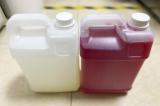- Category :
Laboratory Chemicals
- CAS NO :
- EC NO :
- Molecular Formula :
- Main Specifications :
- Synonyms :
Product description:
Many of us know that the VTM virus preservation solution is used in virus detection. So is it used for virus nucleic acid detection or antibody detection for asymptomatic patients or people who have been vaccinated? Can it be tested without VTM? Maybe some people are not quite clear.
The virus preservation solution is mainly a component added to the virus sampling tube, and PCR detection cannot be performed at every sample collection site, so it is necessary to transport the collected virus swab samples. After the sample is sent to the testing organization, it is analyzed by PCR amplification and other methods, which belongs to the nucleic acid detection of the virus.The sampling tube for virus sample collection consists of a sampling tube, a sampling swab (nasal and throat swab), and a virus preservation solution added in the tube. The preservation solution is divided into two types: inactivated and non-inactivated:
Inactivated preservation solution: The composition has a high concentration of lysis salt, which can not only quickly destroy the cell membrane of the virus host cell, but also denature the protein, denature and precipitate the virus protein, so that the nucleic acid can get rid of the protein entanglement and release the nucleic acid; Contains buffer EDTA and Tris and nuclease inhibitor.
Non-inactivated preservation solution: The ingredients are Hanks solution, which is mainly made of various inorganic salts, buffers, glucose, and 0.4% phenol red under sterile conditions, which are consistent with the pH value, osmotic pressure and sterile conditions of the cell growth state , To prolong the survival time of virus host cells in vitro; in addition, it also contains protein protectants to protect the stability of the virus, as well as buffers and cryoprotectants.
Use of virus preservation solution and sampling tube:
Before sampling, indicate the sample information on the label;
According to different experimental purposes, use a sampling swab to sample at the corresponding part;
The specific sampling methods are as follows:
a) Nasal cavity collection: Gently insert the swab head into the nasal cavity for sampling, use another swab to collect another nasal cavity sample in the same way, immerse the swab head in the sampling solution, and break the tail;
b) Pharyngeal collection: Use a swab to collect a sample of the throat, and also invade the swab head into the sampling solution and break the tail.
 CN ChemNet > Gold Suppliers > Hubei new DE sheng material science and technology co., LTD. >
CN ChemNet > Gold Suppliers > Hubei new DE sheng material science and technology co., LTD. > 